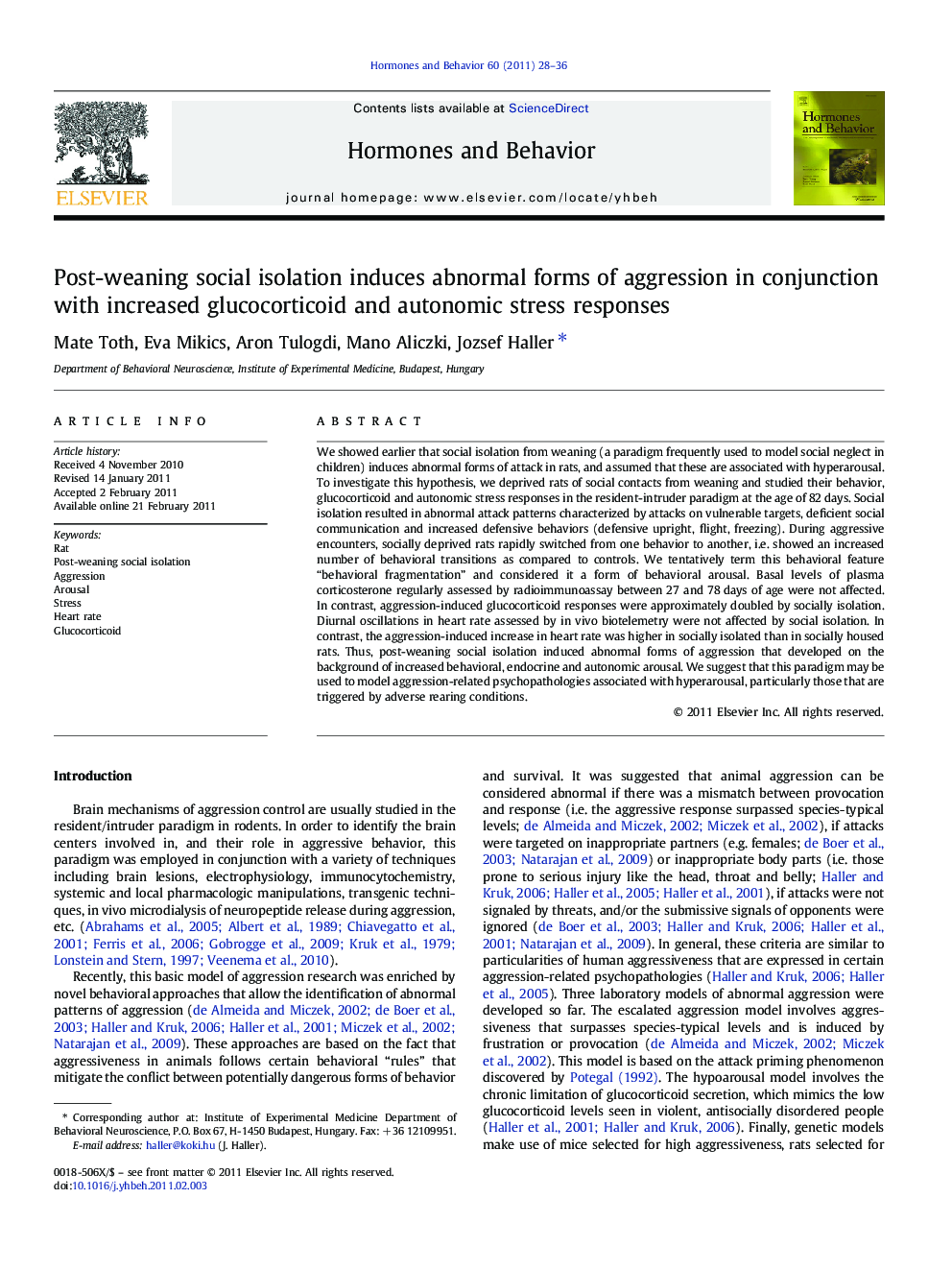| کد مقاله | کد نشریه | سال انتشار | مقاله انگلیسی | نسخه تمام متن |
|---|---|---|---|---|
| 323445 | 540681 | 2011 | 9 صفحه PDF | دانلود رایگان |

We showed earlier that social isolation from weaning (a paradigm frequently used to model social neglect in children) induces abnormal forms of attack in rats, and assumed that these are associated with hyperarousal. To investigate this hypothesis, we deprived rats of social contacts from weaning and studied their behavior, glucocorticoid and autonomic stress responses in the resident-intruder paradigm at the age of 82 days. Social isolation resulted in abnormal attack patterns characterized by attacks on vulnerable targets, deficient social communication and increased defensive behaviors (defensive upright, flight, freezing). During aggressive encounters, socially deprived rats rapidly switched from one behavior to another, i.e. showed an increased number of behavioral transitions as compared to controls. We tentatively term this behavioral feature “behavioral fragmentation” and considered it a form of behavioral arousal. Basal levels of plasma corticosterone regularly assessed by radioimmunoassay between 27 and 78 days of age were not affected. In contrast, aggression-induced glucocorticoid responses were approximately doubled by socially isolation. Diurnal oscillations in heart rate assessed by in vivo biotelemetry were not affected by social isolation. In contrast, the aggression-induced increase in heart rate was higher in socially isolated than in socially housed rats. Thus, post-weaning social isolation induced abnormal forms of aggression that developed on the background of increased behavioral, endocrine and autonomic arousal. We suggest that this paradigm may be used to model aggression-related psychopathologies associated with hyperarousal, particularly those that are triggered by adverse rearing conditions.
Figure optionsDownload high-quality image (134 K)Download as PowerPoint slideResearch highlights
► Post-weaning social isolation induced abnormal forms of aggression in adult rats.
► Abnormal aggression was associated with a marked hyperarousal.
► Hyperarousal entailed the behavioral, stress-endocrine and autonomic levels.
► This paradigm may model emotional violence elicited by adverse rearing conditions.
Journal: Hormones and Behavior - Volume 60, Issue 1, June 2011, Pages 28–36